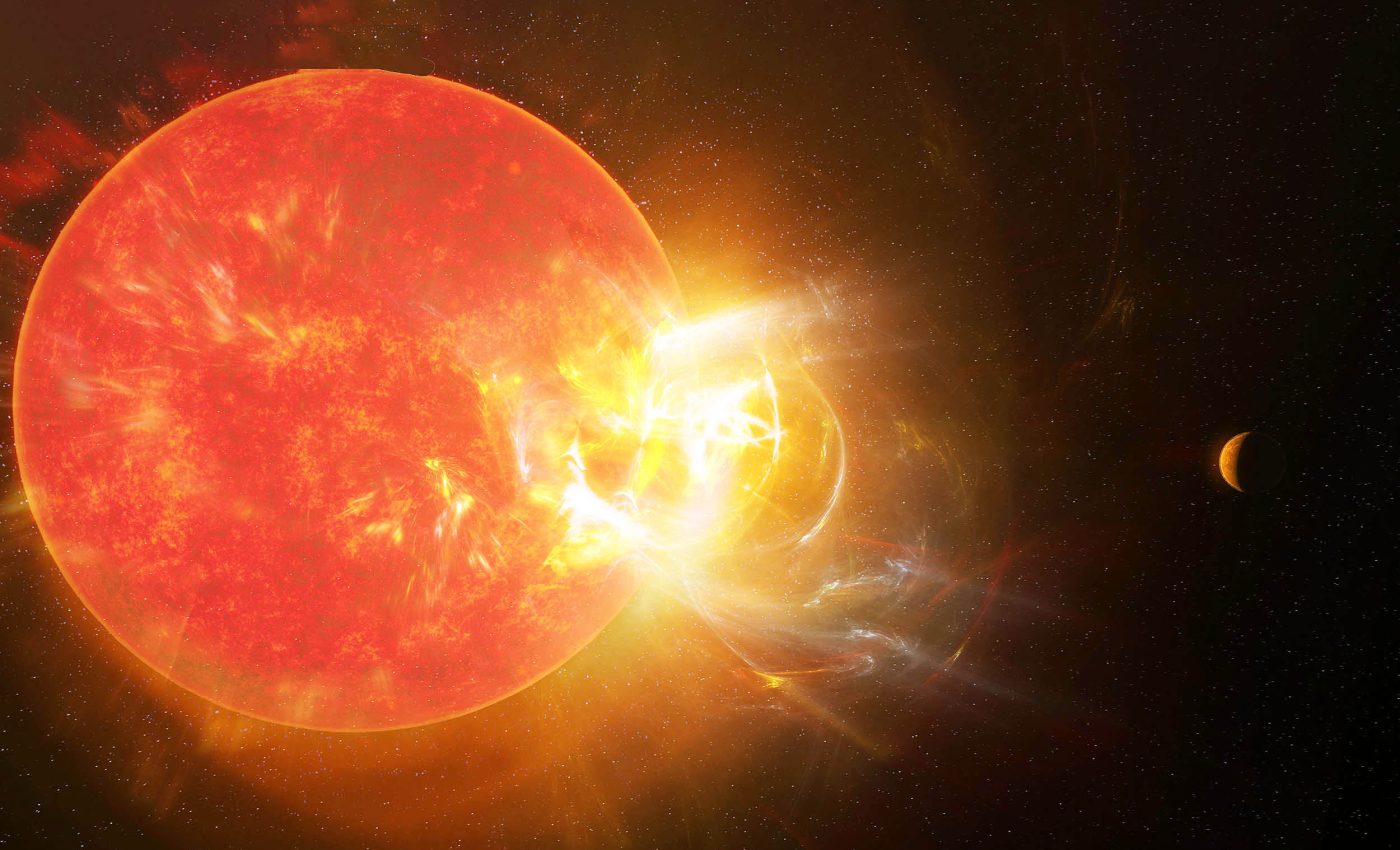
Stellar flares can rearrange the atmospheres of planets within days, including Earth
Stars can throw high‑energy tantrums. Their sudden bursts of X‑ray and ultraviolet light, known as solar flares if they come from the Sun and stellar flares when they happen on other stars, pump out streams of charged particles that race across space.
A new study shows that a single stellar flare can rearrange the atmosphere of an Earth‑size exoplanet within days, warming some layers, cooling others, and kicking up winds strong enough to redraw cloud belts.
The work suggests that a similar, if weaker, tug may also show up in regional weather on Earth.
“This study highlights an underexplored but important solar‑climate link,” said Dr. Assaf Hochman of the Hebrew University of Jerusalem, lead author of the modeling effort.
Understanding stellar flares – the basics
Stellar flares are explosive bursts of energy released from the atmospheres of stars, caused by the sudden reconfiguration of magnetic field lines.
Much like solar flares on our own Sun, these eruptions emit high-energy radiation across the electromagnetic spectrum, including ultraviolet, X-rays, and sometimes radio waves.
However, stellar flares often dwarf their solar counterparts in both intensity and frequency – especially on young, magnetically active stars.
These outbursts result from the build-up and sudden release of magnetic energy in the star’s outer atmosphere, typically in regions where intense magnetic loops twist and reconnect.
Red dwarf stars, in particular, display some of the most violent stellar flares observed to date. Because these stars are smaller and cooler than the Sun, they compensate by having stronger and more chaotic magnetic fields, which frequently trigger energetic flares.
These events can dramatically increase the star’s brightness in a matter of minutes and pose significant challenges to the habitability of surrounding exoplanets by stripping away atmospheres or flooding surfaces with harmful radiation.
Solar flares and exoplanet weather
A space weather event begins when magnetic knots on a star snap and accelerate plasma into space.
Flares on small red dwarfs often pack a punch: Kepler observations show average energies around 10³⁵ erg, orders of magnitude above a typical solar flare.
The new study used a three‑dimensional general circulation model to simulate TRAPPIST‑1e, a tidally locked world that keeps one face toward its star.
After each simulated flare, the model tracked minute‑by‑minute changes in temperature, chemistry, and wind.
Upper atmospheric nitrogen oxides radiated heat away, dropping the thermospheric temperature by up to 180 °F, while water vapor and nitrous oxide trapped infrared light below.
This event also lifted the temperature in the lower mesosphere by 50 °F. Night‑side winds roared past 90 mph, well above the calm baseline.
Flares shift winds on exoplanets
The chain reaction starts high above the planet. Incoming protons split molecular nitrogen, spawning odd‑nitrogen species that trigger ozone loss.
Ozone erosion opens a window for ultraviolet light to reach deeper layers, altering heating rates and shifting pressure patterns.
In the model runs, the most active flare sequence stripped 80 percent of stratospheric ozone within eight simulated years, echoing earlier one‑dimensional results that predicted near‑total depletion under repeated M‑dwarf flares.
With its ultraviolet shield thinned, the planet’s mesosphere warmed and expanded, accelerating east‑west jets.
Such flare‑induced wind bursts of roughly 40 m/s match gravity‑wave‑driven surges seen in high‑resolution Earth models following strong solar proton events.
Earth also reacts to flare events
Earth has a robust magnetic field and a thicker ozone layer than most modeled exoplanets, yet violent space weather, like solar flares from the Sun, already leaves fingerprints here.
Geomagnetic storms in 2003 cooled the middle stratosphere by 0.9 °F over the tropics and nearly 4 °F over Antarctica.
During the Halloween solar proton event of the same year, nitric oxide injections heated the polar mesosphere by up to 18 °F.
Dr. Hochman’s team argues that similar, shorter‑lived anomalies could surface in modern reanalysis once forecasters fold real‑time proton data into weather models.
Solar flares shape exoplanet habitability
Habitability is more than an average surface temperature. Steady access to liquid water, stable chemistry, and tolerable ultraviolet doses all hinge on how often, and how violently, a host star erupts.
The new simulations show that even if a planet sits in the classical habitable zone, a busy flare schedule can shove it into a “moist greenhouse” state, with stratospheric water vapor levels exceeding 0.1 percent by volume.
Analyses suggest that such moisture would accelerate hydrogen loss and could desiccate a world in a few hundred million years.
Still, solar flares are not universally bad. High-energy particles from solar flares can fix atmospheric nitrogen into nitrates on exoplanets and may drive prebiotic chemistry on young planets, as proposed for the early Earth.
Better models and new missions
Modeling limitations remain. Flare spectra were assumed to radiate like 9,000 K blackbodies, yet recent Hubble data place some M‑dwarf events above 14,000 K, which would alter photolysis rates.
Temporal resolution is another hurdle. Real flares unfold in minutes, but daily time steps smooth peak particle fluxes; resolving sub‑hour pulses could sharpen predicted ozone losses.
Finally, upper atmospheric coupling was cut at about 90 miles.
Extending models into the thermosphere and magnetosphere will clarify how exoplanet magnetic fields modulate particle deposition, a factor shown to be decisive in long‑term ozone recovery.
Astronomers will soon test these ideas. The James Webb Space Telescope already hints at weather‑scale variability in exoplanet transit spectra, and future direct‑imaging missions such as NASA’s Habitable Worlds Observatory aim to watch entire planetary disks for day‑to‑day changes.
If solar flares can stir exoplanet skies this quickly, forecasters may need to add real‑time stellar monitoring to the checklist for life‑friendly worlds.
The study is published in The Astronomical Journal.
—–
Like what you read? Subscribe to our newsletter for engaging articles, exclusive content, and the latest updates.
Check us out on EarthSnap, a free app brought to you by Eric Ralls and Earth.com.
—–













